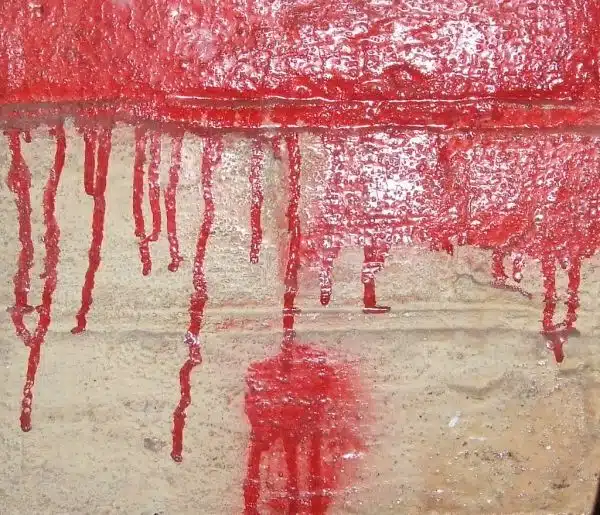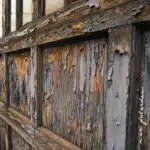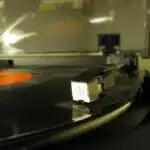Painting is a task that requires patience and attention to detail. A common issue that most people face when painting is paint drips. Paint drips occur when the paint runs down the surface, leaving an unsightly mark on the painted area. While this may seem like a minor problem, it can quickly turn into a major one if left unattended.
As a professional painter or paint expert, it is essential to know how to fix paint drips effectively. This article will provide you with step-by-step instructions on how to fix paint drips and prevent them from happening in the future. By following these simple techniques, you can ensure that your painting project turns out flawlessly and meets the expectations of your clients or yourself. So, let’s dive into the world of fixing paint drips and learn some valuable tips and tricks along the way!
Identifying The Causes Of Paint Drips
As a professional painter, I have seen many instances of paint drips, but identifying the common causes can help prevent them from happening in the first place. One of the most common causes of paint drips is overloading the brush with too much paint. When applying paint, it’s essential to load just enough to cover the surface without leaving an excess that will cause dripping.
Another cause of paint drips is inadequate surface preparation. Before applying any type of paint, it’s crucial to ensure that the surface is clean, free from dust and debris, and dry. Without proper surface preparation, the adhesion of the paint can be compromised, leading to uneven coverage and ultimately causing drips.
Tips for preventing paint drips during application include using a high-quality brush or roller and maintaining a consistent pressure while painting. It’s also advisable to avoid painting in extreme temperatures or direct sunlight as this can cause premature drying and increase the likelihood of drips. By taking these precautions and understanding the common causes of paint drips, you can achieve a smooth finish without any undesirable blemishes.
Understanding why paint drips occur is just one part of achieving a flawless finish; choosing the right tools and materials is equally important. In the next section, we’ll explore some essential tips for selecting high-quality brushes and rollers that will help you achieve professional-grade results every time.
Choosing The Right Tools And Materials
After identifying the causes of paint drips, it’s time to fix them. The first step in fixing paint drips is choosing the right tools and materials. One of the most important tools you’ll need is a good quality paintbrush. Choosing the right paintbrush can make all the difference when it comes to getting a smooth finish.
When choosing paintbrushes, there are several factors to consider. The size of your project will determine what size brush you need. A larger brush will cover more surface area quickly, while a smaller brush will be better for detailed work. You should also consider the type of bristles on the brush. Synthetic bristles are great for water-based paints, while natural bristles are better suited for oil-based paints.
In addition to selecting paintbrushes, you’ll also need to choose the right type of paint cans. There are many different types of paint cans available, each with their own features and benefits. Some cans are designed to be easier to pour from, while others have special lids that help prevent spills and leaks. When selecting paint cans, think about how you’ll be using them and choose accordingly.
Transition: Now that you’ve chosen your tools and materials, it’s time to move on to preparing the surface for painting.
Preparing The Surface For Painting
Priming any surface prior to painting is essential in order to ensure proper adhesion of the new paint. Sanding and cleaning the surface of old paint and dirt is also important to create a smooth, even finish. Repairs, patching, and caulking can be used to fill any cracks or holes before painting. Finally, taping and sealing should be done to protect any areas not intended to be painted.
Priming
Paint drips are a common problem that can occur during the painting process. However, they can be easily fixed with proper preparation techniques. One of the most important steps in preparing a surface for painting is priming. This not only helps to prevent paint drips, but it also improves the adhesion and durability of the paint.
There are different types of primers available on the market, such as oil-based and water-based primers. Oil-based primers are ideal for surfaces that are difficult to adhere to, such as glossy or previously painted surfaces. Water-based primers, on the other hand, are more environmentally friendly and easy to clean up. It is important to choose the right type of primer depending on the surface that you will be painting.
The best priming technique involves applying an even coat of primer onto a clean and dry surface using a brush or roller. Make sure to follow manufacturer instructions for best results. Allow the primer to dry completely before applying paint. By taking the time to properly prime your surface before painting, you can avoid paint drips and achieve a smooth and professional finish.
Sanding
Preparing the surface for painting is an essential step in achieving a professional-looking finish. Aside from priming, sanding is another important technique that can help address issues like paint drips. Using different grits of sandpaper can help remove excess paint and create a smooth and even surface for painting.
When fixing paint drips, it is best to start with a coarse-grit sandpaper to remove any buildup or bumps on the surface. Afterward, switch to a finer grit paper to achieve a smoother finish. When sanding, it is important to avoid sanding through layers of old paint or primer as this can create unevenness and affect adhesion.
To avoid sanding through layers, it is best to use light pressure when sanding and stop once you see the previous layer of paint or primer appearing. You can also use masking tape as a guide when sanding edges or corners. By taking the time to properly sand your surface before painting, you can ensure that your final result will be smooth and flawless.
Applying Primer To Prevent Drips
As a professional painter, I understand the frustration that comes with paint drips. These imperfections can ruin an otherwise beautiful finish and require extra time and effort to fix. Fortunately, there are steps you can take to prevent drips from occurring in the first place. One of the most effective ways is to apply primer before painting.
When it comes to choosing a primer, it’s important to consider the type of surface you’ll be painting on. There are different types of primers designed for specific surfaces such as wood, metal, or drywall. Additionally, some primers have stain-blocking properties or are designed for use in high-humidity areas like bathrooms. By selecting the right primer for your surface and needs, you’ll improve the adhesion of your paint and reduce the chances of drips.
Once you’ve selected your primer, application technique is key to getting a smooth finish. Make sure to apply an even coat, using a brush or roller depending on the size of the area being painted. Don’t overload your brush or roller with primer as this can lead to drips and uneven coverage. Instead, use light pressure and multiple thin coats if necessary to achieve an even layer of primer over your surface. With these techniques in mind, you’ll be well on your way to preventing paint drips and achieving a flawless finish.
By applying primer correctly, you’ll significantly reduce your chances of encountering paint drips during application. However, there is one more crucial step that must not be overlooked: mixing your paint correctly. In order for paint to adhere properly and create a smooth finish free from imperfections like bubbles or streaks, it must be mixed thoroughly before use. In the next section, we’ll discuss how to mix paint correctly so that you can achieve professional-looking results every time you pick up a brush or roller.
Mixing The Paint Correctly
After applying primer to prevent drips, it’s important to mix the paint correctly. Mixing techniques can vary depending on the type of paint being used, but in general, it’s important to stir the paint thoroughly before using it. This ensures that all of the pigments are evenly distributed and that the consistency of the paint is uniform.
One helpful tip for mixing paint is to use a stirring stick or paddle instead of shaking the can. Shaking can introduce air bubbles into the paint which can cause uneven application and lead to drips and runs. Another technique is to pour a small amount of paint into a separate container and mix it with a stirring stick before adding more paint to achieve proper consistency.
Paint consistency is crucial in preventing drips and runs. If the paint is too thick, it will not spread evenly and may leave brush marks or clumps. If it’s too thin, it will drip and run down surfaces. To achieve proper consistency, add small amounts of water or thinner as needed until the desired texture is achieved.
When using proper painting techniques such as mixing correctly and achieving proper consistency, you can significantly reduce your chances of encountering drips and runs during your painting project. By taking these steps to ensure a smooth application process, you can create a professional-looking finish that you’ll be proud of for years to come.
Using Proper Painting Techniques
Did you know that proper painting techniques can prevent paint drips from forming in the first place? It’s true! According to a study conducted by Sherwin-Williams, 70% of paint drips occur due to improper painting techniques. This means that if you’re struggling with paint drips, the solution may be as simple as improving your technique.
One key technique to keep in mind when painting is brush stroke direction. When using a brush, it’s important to use long, smooth strokes and to follow the grain of the surface being painted. Brushing against the grain can cause paint to gather in certain areas and create unsightly drips. Additionally, using too much pressure while brushing can also lead to excess paint buildup and dripping.
Another helpful tip is to pay attention to your roller application. When using a roller, it’s important not to overload it with too much paint. Instead, start with a small amount and gradually add more as needed. Using a roller cover with a lower nap (or thickness) can also help reduce the likelihood of drips forming on the painted surface.
Now that you’re armed with these brush stroke and roller painting tips, you’ll be well on your way to preventing paint drips from occurring during your next project. But what should you do if you still end up with some pesky drips? In the next section, we’ll discuss how sanding down dried drips can help salvage your finished product.
Sanding Down Dried Drips
Once the paint has dried, it’s time to sand down any drips that may have occurred during the painting process. Sanding techniques can vary depending on the severity of the drip and the surface being painted. It is important to use a sandpaper grit that is appropriate for your project.
Choosing sandpaper grit is an essential part of the process. For small drips, start with a fine-grit sandpaper such as 220 or 320. This will help to remove any excess paint without damaging the underlying surface. For larger drips, you may need to use a coarser grit such as 100 or 120 to remove more material in one go.
When sanding, be gentle and avoid using too much pressure. Start by lightly sanding the area in a circular motion until the drip has been smoothed out. Then, switch to a back-and-forth motion to blend in the sanded area with the rest of the surface. Remember, it’s better to sand too little than too much, as you can always go back and touch up the area if needed.
Transition into scraping off wet drips: Now that we’ve covered how to sand down dried drips, let’s move on to how to scrape off wet drips before they dry and become more difficult to fix.
Scraping Off Wet Drips
After sanding down dried drips, it’s time to move on to scraping off wet drips. Picture this: you’re painting your living room walls, and as you step back to admire your work, you notice a drip running down the wall. You quickly grab a putty knife and attempt to scrape it off, but it only seems to smear the paint. This is where the scraping technique comes in handy.
Using a putty knife, gently scrape off any excess wet paint drips from the surface of your wall or object. Be careful not to press too hard or scrape too deeply into the surface, as this can damage the underlying material. Once most of the excess paint has been removed, switch to using sandpaper. The sandpaper method involves lightly sanding away any remaining paint drips until they are flush with the rest of the surface.
If there are still some stubborn paint drips that won’t come off with scraping or sanding alone, try blotting with newspaper before resorting to more aggressive techniques like wet sanding. To do this, simply fold up a sheet of newspaper and use it to gently blot at the drip until it begins to lift off of the surface. This method works particularly well for latex paints that haven’t fully dried yet.
Transitioning into our next section about blotting with a cloth or sponge, it’s important to note that each technique serves its own purpose and should be used accordingly. When dealing with wet paint drips that have not yet dried completely, blotting with newspaper can be an effective way to remove excess paint without causing damage to your surface. However, for more stubborn drips or those that have already dried, additional techniques such as wet sanding may be necessary for successful removal.
Blotting With A Cloth Or Sponge
When it comes to fixing paint drips, blotting with a cloth or sponge is an effective technique. To start, dampen the cloth or sponge with water and gently press it onto the affected area to absorb excess paint. Be sure not to rub the surface as this may cause smudging and create an uneven finish.
For larger drips, fold the cloth into a smaller size and use it to apply pressure onto the drip. You can also use a sponge to blot the excess paint away by lightly tapping on the surface. When using this technique, it’s important to work quickly before the paint dries and becomes more difficult to remove.
Using different blotting techniques can help prevent future drips. One method is to use painter’s tape around edges and corners before painting. This provides a barrier that catches any excess paint that may drip down. Additionally, you can use thinner coats of paint when applying them onto surfaces as thicker coats tend to result in more drips.
Transition: While blotting with a cloth or sponge is effective for fixing minor drips, sometimes more drastic measures are necessary. In such cases, using a paint thinner may be required for optimal results.
Using A Paint Thinner
As we all know, paint drips can be frustrating to deal with especially when they ruin the finish of your freshly painted surface. Luckily, there are ways to fix this issue and one of them is by using a paint thinner. But before we delve into the benefits and precautions of using a paint thinner, let me tell you something about this technique that might surprise you.
Using a paint thinner to fix paint drips may seem like an easy solution but it should not be taken lightly. In fact, it requires skill and precision to avoid damaging your painted surface. Remember that a paint thinner is a powerful solvent that can dissolve not only unwanted drips but also the existing layer of paint if used excessively or incorrectly. Therefore, it is important to follow certain guidelines when using a paint thinner.
Benefits of using a paint thinner include its ability to thin out heavy-bodied paints which makes them easier to apply on surfaces. It also helps in cleaning up brushes and other painting tools after use. However, precautions must be observed when using this product such as wearing protective gear, working in a well-ventilated area, avoiding direct contact with skin or eyes, among others. Moreover, it is recommended to test the effect of the product on a small inconspicuous area first before applying it on the entire surface.
Now that you know how to use a paint thinner properly and safely, you can confidently tackle those pesky paint drips without worrying about damaging your painted surface. Once you have removed all the unwanted drips and spots from your surface, you can proceed with applying a second coat of paint for better coverage and finish. Just remember not to rush the process and allow enough time for each layer of paint to dry completely before adding another one.
Applying A Second Coat Of Paint
When it comes to fixing paint drips, one of the best practices is to apply a second coat of paint. This method not only helps cover up the mistake but also ensures an even finish throughout the surface. However, applying a second coat can be tricky and requires some knowledge to avoid common mistakes.
One of the most common mistakes people make when applying a second coat is using too much pressure on the brush or roller. Doing so can cause the first layer of paint to mix with the second, leading to a lumpy and uneven finish. To prevent this, use light pressure and allow each coat to dry completely before applying another.
Another mistake that people often make is failing to clean their tools properly between coats. This can lead to dried paint flakes mixing with fresh paint, resulting in an unappealing finish with bumps and clumps. Therefore, it’s important to clean your brush or roller thoroughly with water or appropriate solvent before starting on a new coat.
Overall, applying a second coat of paint can fix drips and ensure an even finish if done correctly. Remember to use light pressure and clean your tools between coats for the best results. In the next section, we will discuss how you can prevent future drips by using tape or drop cloths during painting projects.
Preventing Future Drips With Tape Or Drop Cloths
Paint drips can be a frustrating issue to deal with, especially if you’ve already put in the time and effort to complete a project. However, there are preventative measures that can be taken to avoid drips altogether. One option is to use tape when painting. There are different types of tape available for painting, such as painter’s tape and masking tape, both of which can help prevent paint from seeping onto surfaces where it’s not wanted.
Another option is to use a drop cloth instead of plastic sheeting. Drop cloths are made from absorbent materials such as canvas or cotton, which means they soak up excess paint and protect floors or furniture from drips. Plastic sheeting, on the other hand, can cause paint to pool up and create more drips as it spreads out over the surface.
When using tape or drop cloths to prevent drips, it’s important to make sure they are properly secured before painting. Tape should be applied smoothly and snugly against surfaces where you don’t want paint to go. Drop cloths should be positioned carefully so that they cover the entire area you’ll be working in. By taking these precautions, you can minimize the risk of paint drips and ensure a clean finish for your project.
To avoid future paint drips, proper storage of leftover paint is crucial. By storing paint cans upside down (assuming they have been properly sealed), you can create an airtight seal that prevents air from entering the container and causing the paint inside to dry out or thicken. This will help ensure that your leftover paint remains usable for future projects without any unwanted drips or clumps.
Properly Storing Paint To Avoid Drips
Storing paint properly is a crucial step in avoiding drips. When you store your paint cans, you must ensure that they are tightly sealed to prevent air from entering the can and drying out the paint. Additionally, it is important to store your paint cans upside down, as this will create a tight seal and keep the paint fresh.
Tips for storing paint include keeping it in a cool, dry place away from direct sunlight. Heat can cause the paint to dry out and form clumps or bubbles, which can lead to drips when applied. Also, avoid exposing your stored paint cans to extreme temperatures or freezing conditions as this can damage the consistency of the paint and cause it to become unusable.
Common mistakes leading to paint drips include overloading your brush or roller with too much paint, not allowing enough time for each coat to dry before adding another layer, and using poor quality brushes or rollers that do not apply the paint evenly. To avoid these mistakes, make sure you use high-quality brushes and rollers that are appropriate for the type of surface you are painting and take your time applying each coat.
In the next section, we will discuss how to touch up areas with drips. However, before we move on to that topic, it is important to understand how proper storage techniques can prevent drips in the first place. By following these simple tips for storing your paints correctly, you can help ensure that your next painting project is free of frustrating drips and runs.
Touching Up Areas With Drips
When touching up areas with drips, there are a few steps you can take to ensure that your paint job looks seamless. First, gently sand the area around the drip using fine-grit sandpaper until it is smooth. Then, clean the area thoroughly with a damp cloth and allow it to dry completely.
Next, choose a paint color that matches the surrounding area as closely as possible. Blending colors is key to creating a seamless look. Apply a small amount of paint to the tip of a brush or roller and carefully fill in the area with the drip, being careful not to apply too much pressure. Allow this coat to dry completely before adding another layer if needed.
If you find that your touch-up work is still not satisfactory or if you are dealing with imperfections beyond drips such as cracks or holes, you may want to consider seeking professional help. Professional painters have experience in hiding imperfections and blending colors seamlessly. They also have access to higher quality materials and tools than what is typically available at home improvement stores.
Transition: While fixing drips on your own can be a satisfying DIY project, sometimes calling in professional help is necessary for stubborn imperfections or for achieving a flawless finish. In the next section, we will discuss when it might be time to seek out professional painting services and what benefits they can offer.
Seeking Professional Help For Stubborn Drips
Like a stubborn stain on a white shirt, sometimes paint drips just won’t budge. In these instances, it may be time to seek the help of a professional painter. While DIY methods can be effective for minor drips, more severe ones require specialized equipment and expertise that only professionals possess.
When hiring professionals, it is important to do your research and choose a reputable company with experience in fixing paint drips. Look for reviews and testimonials from previous clients and ask for references. A professional painter should also provide you with an estimate before starting the job.
While hiring professionals may seem costly, it can save you time, money, and frustration in the long run. However, if you prefer to try a DIY alternative first, there are options available such as sanding or scraping off the drip and repainting the affected area. Keep in mind that these methods may not be as effective as those used by professionals.
| Pros of Hiring Professionals | Cons of DIY Alternatives |
|---|---|
| Specialized equipment and expertise | May not completely remove drip |
| Saves time and frustration | Can result in additional damage |
| More likely to produce high-quality results | Requires significant effort |
If your paint drips are particularly stubborn or if you lack experience in painting, it may be best to leave the job to professionals. Not only will they ensure that the job is done correctly, but they can also provide advice on how to avoid future paint drips. Remember that while DIY alternatives can be effective for minor issues, more severe cases require specialized knowledge and equipment that only professionals possess.
Conclusion
Paint drips can be frustrating and time-consuming to fix, but with the right tools and techniques, they can be avoided. Identifying the causes of paint drips is crucial to preventing them in the future. Proper preparation of surfaces, mixing paint correctly, and preventing drips with tape or drop cloths are all essential steps.
Applying primer before painting is also an effective way to prevent drips. When touching up areas with drips, it’s important to use a light touch and blend in the surrounding area for a seamless finish. Proper storage of paint is also key to avoiding future drips.
As professional painters know, prevention is always better than cure when it comes to paint drips. Just like how a good artist uses a light hand when applying brushstrokes, a good painter takes their time and pays attention to detail when painting. By following these tips and techniques, you can achieve a flawless finish without any unsightly paint drips. Remember: patience and precision are essential ingredients for any successful painting project!
Image Credits
- “* Red Paint Dripping On Cement *” by pareeerica (featured)





























